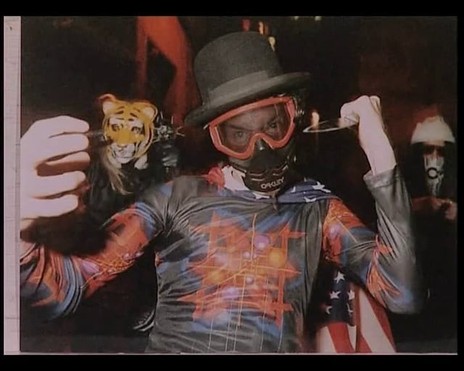AudioCulture
The noisy library of New Zealand music
Te pātaka korihi o ngā puoro o Aotearoa
The Kiwi Animal
aka Smelly Feet
As persistent and wide-ranging solo act Smelly Feet, he played and recorded throughout 1981 before morphing into The Kiwi Animal in 1982 with the equally talented Julie Cooper and later, Patrick Waller.
‘File Under New Acoustic Music’, the first Kiwi Animal album suggested. And it was certainly that, but oh so much more. Hayward chased a string of ramshackle Smelly Feet singles with a formative Kiwi Animal EP (Wartime) and two enduring albums (Music Media - 1984, Mercy - 1985).
Before Kiwi Animal’s extinction in late 1985, there’d be shows with many of the country’s rising indie acts; determined, rambling tours; fascinating multi-act one-offs and offbeat collaborations with Red McKelvie, Dance Exponent Brian Jones and US beat poet William S. Burroughs.
A Song For The World
With Shoes This High’s Jessica Walker and Kevin Hawkins often away at hippie communes on the Coromandel Peninsula and back in Wellington, Brent Hayward found himself at a loose end in Auckland, where he’d lived since mid-1980. He didn’t let on, but he had a new direction in mind. He’d learn guitar, write songs and then record them – all at the same time. No wonder it was a surprise when the records appeared.
He was soon onto RipItUp about his new enterprise. “I mainly play on the streets,” he told them, “but I did an old people’s home, where they clapped by banging on their wheelchairs. I would like to play clubs and pubs, but I wouldn’t use a band unless I was playing the town hall. There are enough bands already, and people tend to categorise you.”
God knows what they thought in Auckland’s professional Mascot Studio when Hayward turned up in 1981 to record.
God knows what they thought in Auckland’s professional Mascot Studio when Hayward turned up in 1981 to record. The anarchic folk songs would make up his first three singles as Smelly Feet. Then again, maybe they got it. Folk music has always had its eccentric soloists and minimalists. But not in New Zealand in the immediate post-punk era: the music that predominated then was strictly electric. Paring it down to the acoustic was a radical act.
As Smelly Feet, Hayward would travel the country with his battered brown suitcase full of records and self-made books, playing his guitar where he could .
“I ate fuck all, saved up my dole, worked a kitchen stint, sold my record collection and travelled by thumb to every nook and cranny of New Zealand, selling the Smelly Feet singles, of which there were three, plus one cassette. I played the streets, clubs, psycho hospitals, pubs, hotels, art galleries, cafes, cars, car parks, restaurants,” he told Gregor Kessler for a comprehensive article in American fanzine Popwatch in 1998.
Relying on contacts such as The Chills’ Martyn Bull, who was a childhood friend from Masterton, he’d turn up at shows cold and ask to play between sets. Nine out of 10 of the headlining groups said yes.
Hayward prevailed upon The Clean in mid-June 1981 at the Reverb Room before shows with Naked Spots Dance, Auckland eccentrics A Second Nose, and Wellington punks Knives of West Eleven. The Clean were back in town in September, with Hayward again in support alongside Alms For Children at Rumba Bar mid-month. Smelly Feet then coupled with Alms For Children and A Second Nose at Auckland University Café on September 25.
The South Island got a look in October with Smelly Feet shows that included three nights at Christchurch’s DB Gladstone. A Second Nose helped weird out the Station Hotel in Auckland in November, before Smelly Feet’s malodorous sound filled the Rumba Bar on December 4 and 5.
Hayward’s suitcase now had two new singles in it. The first was the simple and disconcertedly hypnotic ‘OHMS’. (OHMS — On Her Majesty’s Service — was an acronym that appeared in the top right hand corner of all Government department envelopes.) The single was available by September 1981, backed by ‘A Festered Toe’ and ‘Comparisons’, having been recorded in March at Mascot Studios.
The four-song As Seen On TV included ‘A Song For The World’, which The 3Ds had the sense (and obscure taste) to cover as ‘A Song For The Whole World’ and add as an extra track to the CDEP of ‘Beautiful Things’ in 1993.
Smelly Feet started 1982 at the Old Synagogue, a new performing space in Auckland’s Symonds Street. In February, his DIY folk classics ‘Masterpieces’ and ‘You’re A Person’ appeared, followed not long after by the collection, Left Odours.
The 17-song tape featured Hayward’s skewed folk tracks’ ‘Fashion Street’, Light Bulb Moon,’ and ‘I Want To Be A Railwayman.’ There was even some whistling. A demented piece of skat singing in the form of ‘The Yes Men’ proved a real gem. The 60-minute tape also presented two full songs and some snippets from Hayward’s small stage performance at Sweetwaters festival in late January.
Then it was back to the pub with Zombies of the Stratosphere in March at the Rumba Bar. On April 20, Smelly Feet was at the Youth Resource Centre near Auckland Technical Institute. In late June 1982 the tattered troubadour headed down country for shows at Christchurch’s Star and Garter and Dunedin’s Empire Tavern, accompanied by a cardboard human.
“I travel quite a lot, hitch-hike,” he later told RipItUp. “When people pick me up they see my guitar and ask me what sort of music I play. Blues? Country? Rock? And I always used to try to find some category to describe it. But now I don’t have to. I just say I play my own music — and that’s the first time I’ve been able to do that.”
August 11 found Kiwi Animal at The Little Theatre in Princes Street, highlighting new songs and old, with poetry and two stories from the recently published The Book and the Trees (with Julie Cooper). Billed as The Real Theatre, the multi-media show chased a spot before touring Northern English The Fall on their second night at Mainstreet. Smelly Feet saw the month out at The Globe.
Flying Again
The next phase of Hayward’s acoustic odyssey began in a single room workspace he shared with journalist, theatre performer and poet Julie Cooper in inner city Auckland, a place where they worked on their own projects while working part-time jobs. The pair gradually brought aspects of their creativity together for an exhibition called Making The Monster.
Kiwi Animal began with The Real Theatre show at Blondie’s café in August 1982. At month’s end, the duo headed south to New Plymouth for dates with storming Auckland-based Taranaki locals, Nocturnal Projections.
Over the following months, the acoustic pair could be found with Green Eggs and Ham at the Maori Mission Hall in Auckland in September, before returning to the same venue in November with Fishschool (the rump of Shoes This High), Coalition Broadcasting Corporation (aka CBC) (Chris Williams and Hugh Tercel ex-Herco Pilots), Green Eggs and Ham and Sick Dogs. Christmas day was spent at the Dargaville Hotel and Boxing Day at the Dargaville Bandstand.
On January 27, 1983, Kiwi Animal captured their first batch of music for posterity at ‘Ampleford’s Place’ in Auckland for an EP they would name Wartime. Hayward’s still erratic (but apt) strum complemented and at times contrasted with Julie Cooper’s lyrics and vocals, which featured on four of the five songs, including the standout ‘Flying (Again!)’. Hayward contributed lyrics and vocals to ‘Private Stanley and shared the singing with Julie on ‘Jokers and Clowns’. The EP appeared in February on Brent and Julie Records.
“Five urban folk songs?” RipItUp ventured and got near to the heart of it. The recordings had all the light, shade and air of the city’s cloistered, and sometimes, open spaces.
At University of Auckland Mardi Gras on 15 February, Kiwi Animal brought together 10 people as Ten Art Beats, including Shoes This High’s Kevin Hawkins and members of CBC. The event produced a C30 tape and a rough film later described by RIU’s Jewel Sanyo (Jill Samuels) as a “soundtrack and movie worse than your mother made — with Warholian time exposure.” Soon afterwards Kiwi Animal were back on stage with Green Eggs and Ham in Parnell.
Mid-May Kiwi Animal was in Napier and at Cosgroves in Wellington before heading back to the Queen City for a Bad Taste Party featuring bands, films, videos and supper on the 21st. They were headed down the islands yet again in June taking in Cosgroves in Wellington and The Empire in Dunedin. Four days later they were back in Auckland at the Rumba Bar.
Kiwi Animal saw July in at the same venue with The Gramme in support, book ending the month with a multi-band and media show at Knox Church Hall in Parnell on the 23rd. The Kiwi Animal Dance, they called it, drafting in blues man Ralph Bennett and Phantom Forth and instigating a jam between them and Coalition.
One Hundred was Chris Knox and Barbara Ward dancing behind a red velvet curtain to a swirling synth sound track. Kiwi Animal would provide, “A sharp edged folk art morality play chilling with fey touches of humour, theatre dialogue. The stark protest song mode contrasting with the harmonious quality of Julie’s voice and the acoustic guitars. The music — ‘Flying Again’ and ‘Time Of The Leaves’ is lovely,” Kiwi Animal’s most acute observer, Jewel Sanyo wrote.
With all that activity and travel Hayward should have updated his stage name to itchy feet as he and Julie again went south to Christchurch’s DB Gladstone for two nights in August, then on to Dunedin for shows at the Empire on the 30th and 31st and September 1 with The Blue Meanies.
The recording bug was still biting and a Real Records 12” compilation with Smelly Feet, Kiwi Animal and Real Theatre was mooted. It never happened, although New Plymouth’s Ima Hitt Records’ Ima Cassette Thing, featured five live Kiwi Animal songs and Smelly Feet’s Radio B commercial.
Another multi-band outing was organised by Hayward, this time at Ponsonby Community Theatre in early October with The Ha Has, poet David Eggleton, Red Cross, Jellymen, Fishschool (with Christine Voice and Tim Wareham singing), plus Blue Green Browns, which was Brent and Julie with others.
Time Of The Leaves
In October 1983, well over a year since they first linked minds and talents, Julie Cooper and Brent Hayward settled into a prolonged period of recording activity at Auckland’s Last Laugh Studios and at The Old Synagogue in Auckland. Music Media, the resulting album, would prove to be one of the New Zealand post punk’s first fully realised long players.
Before the album’s mid-year release, there was a national tour in February that took in Wanganui, Trinity Theatre and Newman Hall in Christchurch, Otago University and a hall in Gore. Two days later the duo were back in Auckland at The Old Synagogue with Marie & The Atom to close out the month with a “quiet and reflective sample of most of their material from their forth-coming album”. (Jewel Sanyo, RipItUp.)
Music Media is an end-to-end classic, jammed with adventurous acoustic folk that is both soothing and disconcerting.
Kiwi Animal finished Music Media in March and hit the road once more. This time to Old St Paul’s in Wellington and Palmerston North’s performing space, Snailclamps on the 9th and 10th. In April, New Plymouth got another look, with a gig at the White Hart mid-month.
Hayward and Cooper debuted the new album on University of Auckland’s Campus Radio between 10 pm and 1 am on Monday June 19, 1984.
Music Media is an end-to-end classic, jammed with adventurous acoustic folk that is both soothing and disconcerting. Hayward called the album “radical acoustic music.”
“Traditional folk has a more traditional chord structure, but I also made these atonal droney notes that would repeat. That came through my introduction to groups like Can, who were repetitive, hypnotic — I thought I could get away with that on guitar,” he said.
Two of the album’s many highpoints were Cooper’s idyllic ‘Blue Morning’ for which a well-received video was made and the eerie autumnal ‘Time of The Leaves.’ ‘Just How Close’ has Hayward doing spoken word and Cooper singing, their two voices slightly out of synch and coloured by what sounds like a viola (it’s credited as Gavin Buxton’s saxophone). ‘Assassin’ is a topical Hayward commentary on a recent political assassination in The Philippines, layered over primal acoustic chording.
The whole Music Media package was elevated by Caroline Sommerville’s violin, Patrick Waller’s cello and Sarah Westwood’s viola and adorned by Kim Pieters’ first cover art. A rumoured Chris Knox video of ‘Making Tracks’ appears not to have been made or completed.
Jewel Sanyo sat them down in June for an extensive piece in RipItUp — Cry of The Indigenous Kiwi Animal — which looked backed over the previous six months. Julie Cooper: “PIPS asked us to perform on Aotea Square on New Year’s Eve, with the idea of variety, something different from the fire eaters and the 1ZB Goodtime Band. Most people expected something different, an acoustic duo, like the New Faces Awards. There were hecklers, two or three people who call themselves street kids who threw beer cans. They influenced the whole suburban crowd.
“We got letters from the guy who had us there, suggesting that as performers, there was a certain format we should follow if we were to make it work. He suggested we were using shock tactics. He said he was hassled by the ACC organisers for having us there. He was dubious about paying us. He doesn’t understand that the way we perform is the way we perform.”
There was talk of Playspace Fusion at the Gluepot that featured a 20-minute Kiwi Animal spot amidst jazz bands, and being on the road for one and a half months taking in Invercargill and a wet Greymouth pub where they played David Bowie’s ‘Let’s Dance’ for the locals.
Not content with the original release, Massage Records (Kiwi Animal’s new imprint) released an expanded tape version of Music Media with four extra minutes and a different ‘Performance Piece’. Campus Radio listeners again got the scoop. This time at 10 pm on Monday, September 3, 1984. A live performance followed at Auckland’s Bowen Street Theatre on 27 and 28 September.
Early next month, Kiwi Animal launched the Serious Acoustic Tour. First stop was Hamilton’s Left Bank Theatre on October 4, 1984. I was there and talked my way up onto the balcony that was closed to the public after the skins bar break-in at The Great Unwashed show. Hayward and Cooper — Kiwi Animal — were down below standing in a plain white light. They played pure folk, which sounded stark and beautiful in the wake of electric guitar-centric punk and post-punk. There was none of the raw vocals or chordal anarchy of Hayward’s Smelly Feet, none of the deliberate adventure or art of Shoes This High. This was smooth. A simple weave of ringing voices and tuneful folk guitar in harmony.
Then the duo moved south to the Commercial Hotel in Palmerston North, New Depot in Wellington, State Trinity Theatre in Christchurch, Chingford Stables and Arts Workshop in Dunedin.
Mercy
With their fan base ever growing and a firm grip on their art and identity, Kiwi Animal moved an 8-track recorder into Knox Church in Parnell on January 27, 1985. Over the following fortnight, they captured eight songs for their second album, Mercy, with sound engineer Jon Cooper.
Highpoint ‘Man and Woman Have Balance’ was taped at Last Laugh Studios and ‘Fag Piece’ with words by US beat poet William S. Burroughs, a correspondent of Hayward’s, was recorded in the wide open concrete sandwich of J.S Sarten Parking Building.
This time they had Patrick Waller (who would later rename himself Dubhead) installed as a permanent member, providing cello, metal percussion, trumpet, vocals and guitar.
The music was all recorded live except for a trumpet overdub on ‘Mudsinging’ and ‘Woman and Man Have Balance’. Taped sound and dialogue was used on ‘Conversation Piece’ and ‘Fag Piece’. Among those thanked in the credits were fellow sonic adventurer Graham Sinclair for his Casio PT50, future Sombretone, Able Tasmans and Chills member Craig Mason and Brion Gysin.
Gregor Kessler in Popwatch pointed to a “darker undercurrent” in Mercy. “The experimental nature of this LP at times reminds me of soundtrack work rather than out-and-out folk music. I hear the sorts of sounds in “Conversation Piece” and its companion “Fag Piece” that could have scored bleak, wintry tales like those in Krzysztof Kieslowski’s 10-part Decalogue.
“Hayward works some anger loose into these songs, some of which appears to be remotely political in nature, and yet it’s a sort of gently seething anger, on a slow boil rather than a big bang of released tension.
“Pluck just about any single track from the record and you’re left with stark, minimalist folk music, full of warmth and depth, and bursting with strange and wonderful feelings of all kinds. Peter, Paul and Mary this most definitely ain’t.”
Mercy arrived in July 1985 and Kiwi Animal returned to Bowen Studio Theatre on August 29 and 30. After that you’d find Kiwi Animal on stage for the last time at Red Metro in the Eden Building at 123 Albert Street on December 5 and 6. It was billed as a ‘Lecture for Tape Terrorists - film, video and sound.’
Recording had already started on a third album that would never be completed. Hayward: “It was made at Basque Road, Newton at a place that was like the inside of an old sailing ship. Martin Phillipps was playing Chris Knox’s Hawaiian slide guitar. Brian Jones out of Dance Exponents was playing violin. Red McKelvie was playing steel top guitar. Julie was singing. Jed Town was operating knobs — speeding it up and slowing it down [they were using Town’s 8-track].”
Julie Cooper: “The songs were really different — sickly sweet and sinister at the same time. We made lyrics by cutting up and permutating Charles Manson quotes. There were violins and slide guitars. I love those songs! They seem somehow connected to the video footage we were, at that time, shooting with Jed and Serum from Fetus Productions.”
Only one track, ‘Dragons In Eden’ would see the light on bFM’s Outnumbered By Sheep compilation in 1986. Julie Cooper soon moved to Sydney and Brent Hayward headed away from music to theatre and film. Music Media and Mercy were reissued in Germany on Sonic Squid Records in 2000 and 1997.
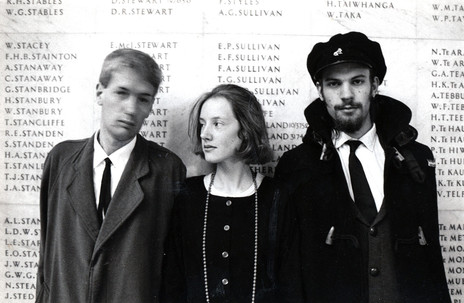
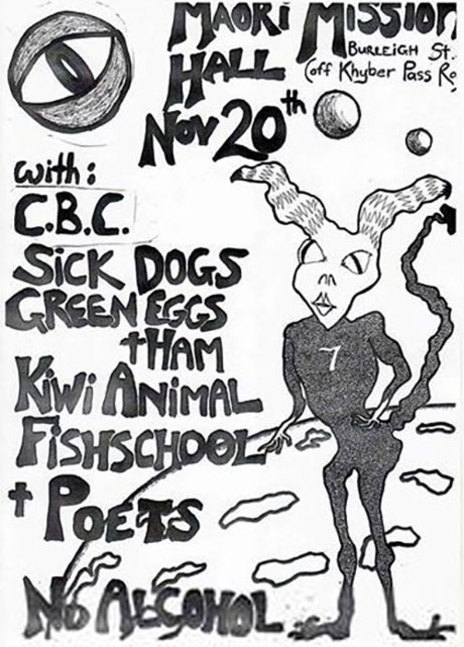
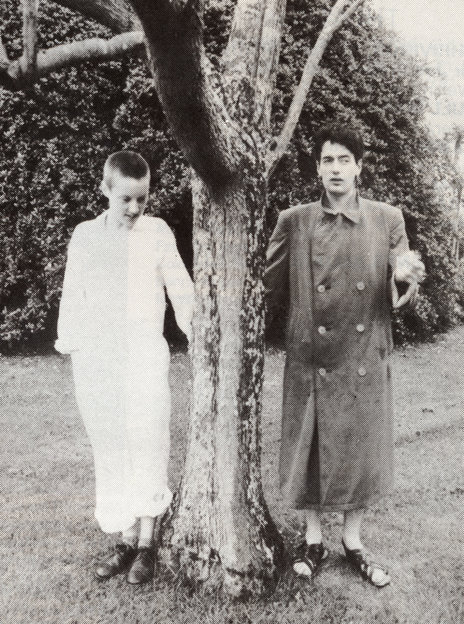
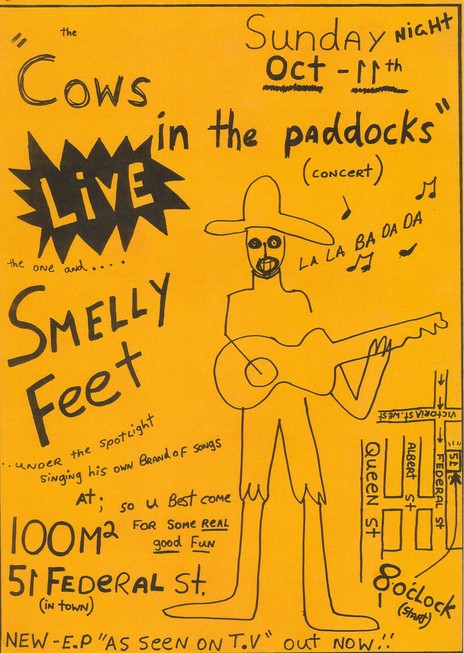
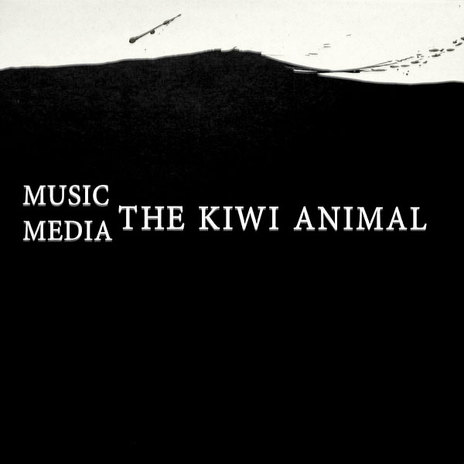
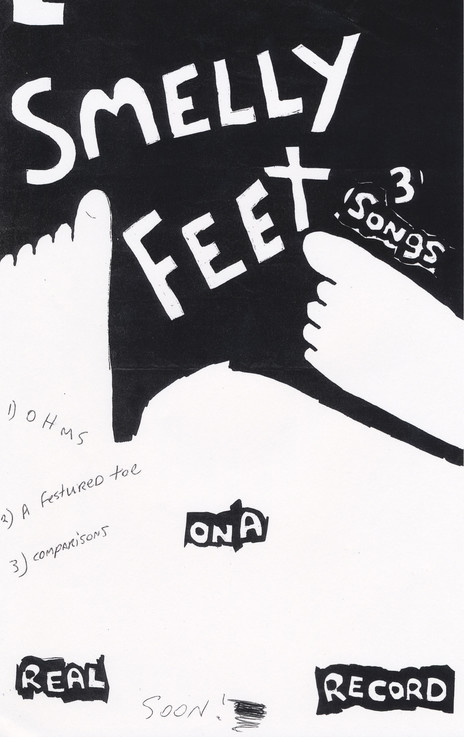
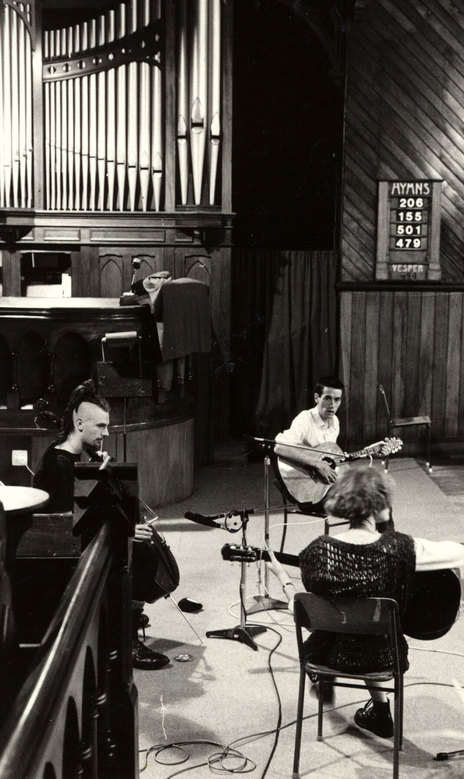
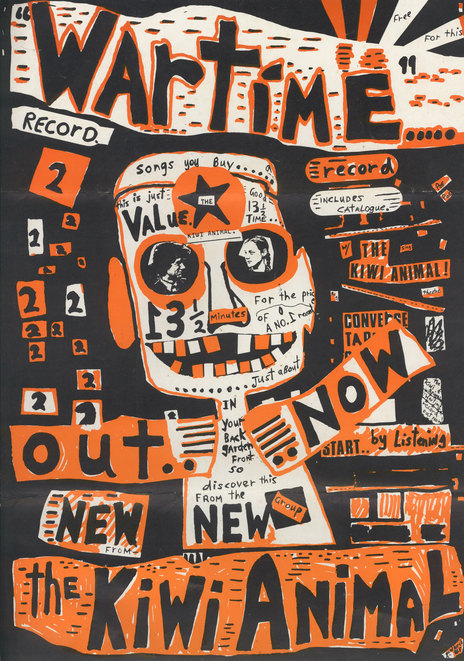
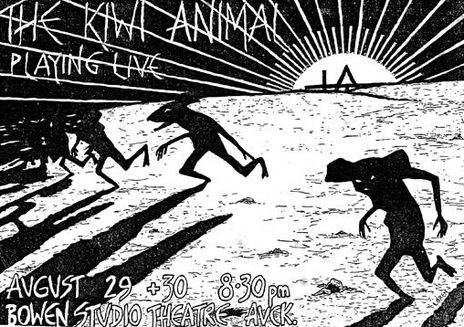
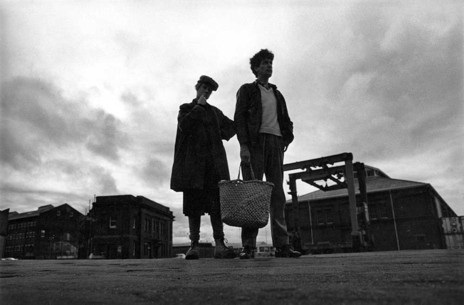
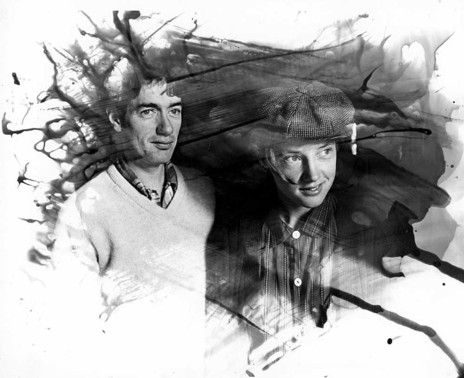
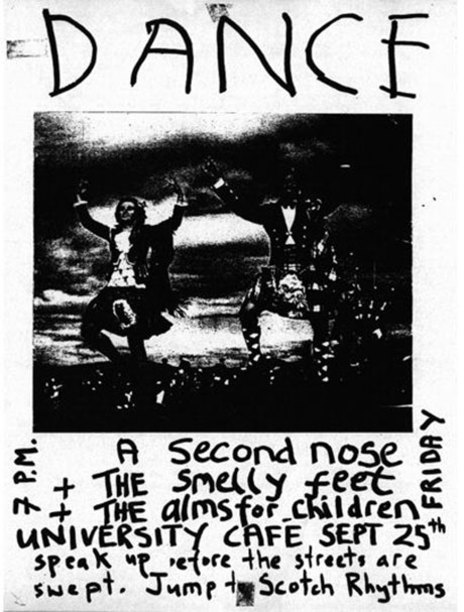
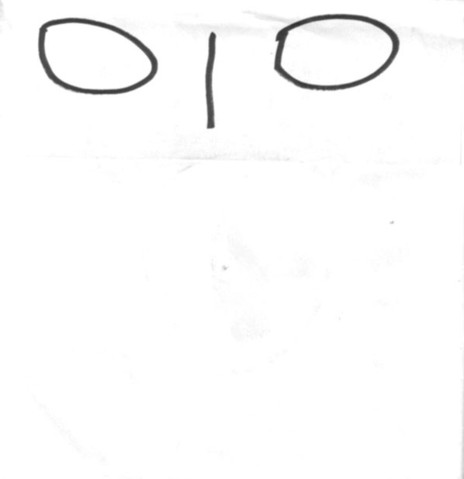
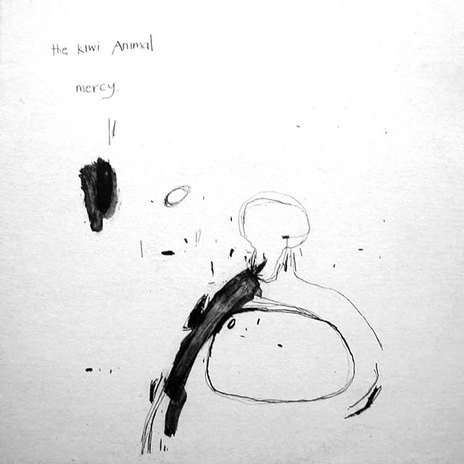
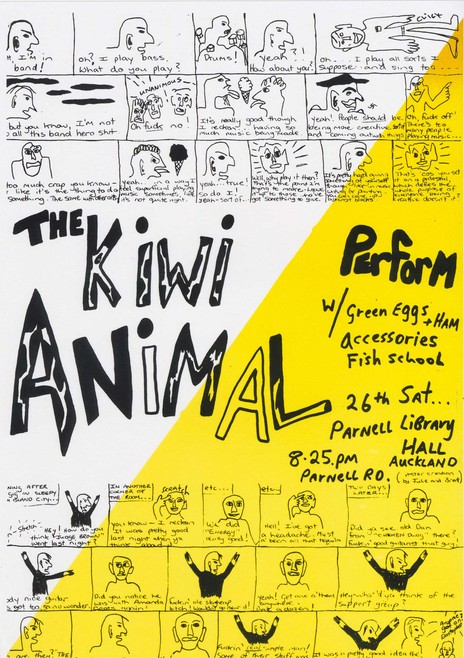
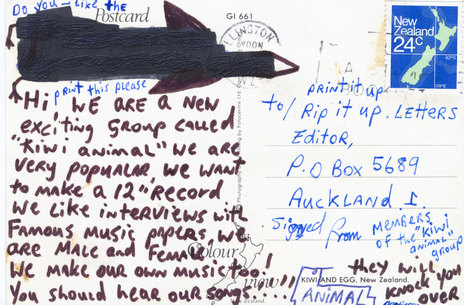
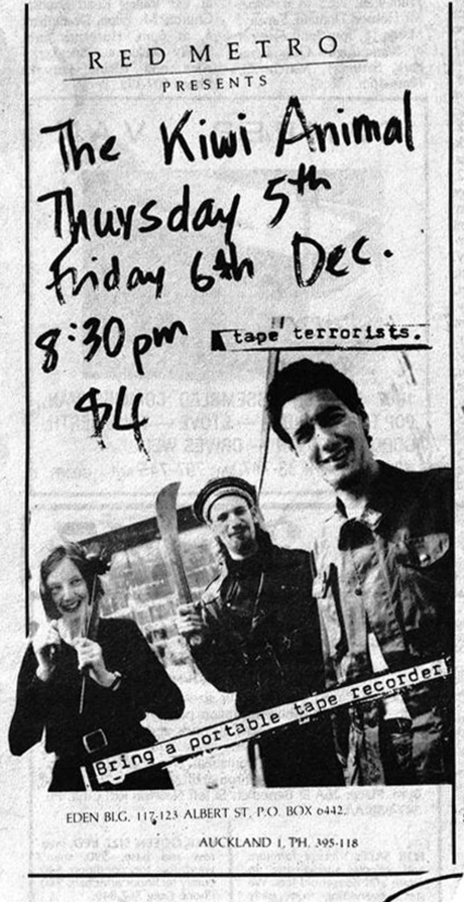
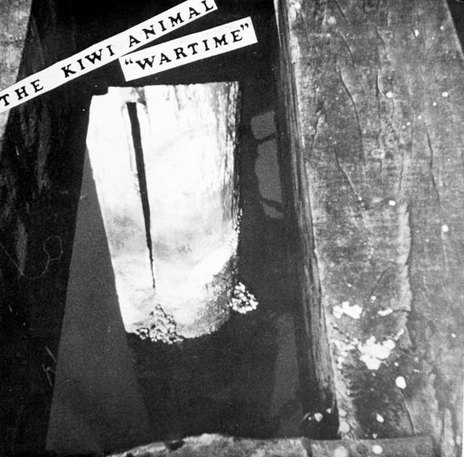
Brent And Julie Records
Massage Records
Brent Hayward's painting of country singer Aly Cook can be found on the cover of her 2015 album Horseshoe Rodeo Hotel.
Brent Hayward - Multi-instrumentalist
Dubhead - Multi-instrumentalist
Julie Cooper - Multi-instrumentalist
Visit our sister site
NZ On ScreenMade with funding from
NZ On Air